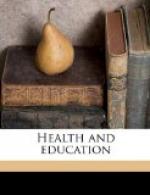One can conceive the rage of the old Spanish pedants at the Netherlander’s appearance, and still more at what followed, if we are to believe Hugo Bloet of Delft, his countryman and contemporary. {390} Vesalius, he says, saw that the surgeons had bound up the wound so tight that an abscess had formed outside the skull, which could not break: he asserted that the only hope lay in opening it; and did so, Philip having given leave, “by two cross-cuts. Then the lad returned to himself, as if awakened from a profound sleep, affirming that he owed his restoration to life to the German doctor.”
Dionysius Daza, who was there with the other physicians and surgeons, tells a different story: “The most learned, famous, and rare Baron Vesalius,” he says, advised that the skull should be trepanned; but his advice was not followed.
Olivarez’ account agrees with that of Daza. They had opened the wounds, he says, down to the skull before Vesalius came. Vesalius insisted that the injury lay inside the skull, and wished to pierce it. Olivarez spends much labour in proving that Vesalius had “no great foundation for his opinion:” but confesses that he never changed that opinion to the last, though all the Spanish doctors were against him. Then on the 6th, he says, the Bachelor Torres came from Madrid, and advised that the skull should be laid bare once more; and on the 7th, there being still doubt whether the skull was not injured, the operation was performed—by whom it is not said—but without any good result, or, according to Olivarez, any discovery, save that Vesalius was wrong, and the skull uninjured.
“Whether this second operation of the 7th of May was performed by Vesalius, and whether it was that of which Bloet speaks, is an open question. Olivarez’ whole relation is apologetic, written to justify himself and his seven Spanish colleagues, and to prove Vesalius in the wrong. Public opinion, he confesses, had been very fierce against him. The credit of Spanish medicine was at stake: and we are not bound to believe implicitly a paper drawn up under such circumstances for Philip’s eye. This, at least, we gather: that Don Carlos was never trepanned, as is commonly said; and this, also, that whichever of the two stories is true, equally puts Vesalius into direct, and most unpleasant, antagonism to the Spanish doctors. {392}
But Don Carlos still lay senseless; and yielding to popular clamour, the doctors called in the aid of a certain Moorish doctor, from Valencia, named Priotarete, whose unguents, it was reported, had achieved many miraculous cures. The unguent, however, to the horror of the doctors, burned the skull till the bone was as black as the colour of ink; and Olivarez declares he believes it to have been a preparation of pure caustic. On the morning of the 9th of May, the Moor and his unguents were sent away, “and went to Madrid, to send to heaven Hernando de Vega, while the prince went back to our method of cure.”




